People and nature blend together, a very special soba.
In northern Mie Prefecture, along the border with Gifu and Shiga Prefectures, lies the city of Inabe. To the north stand the Yoro mountains, while to the west the Suzuka mountain range looms. Nestled in between these mountains is a land where people live in harmony with nature. Inabe is relatively cool year round, and the great difference between daytime and nighttime temperatures results in a climate quite suitable for raising Japanese buckwheat, or soba. Taking advantage of this climate, cultivation of hitachiaki soba began here in 2002. Currently, Inabe boasts about 90 hectares of soba cultivation, the most in Mie Prefecture.
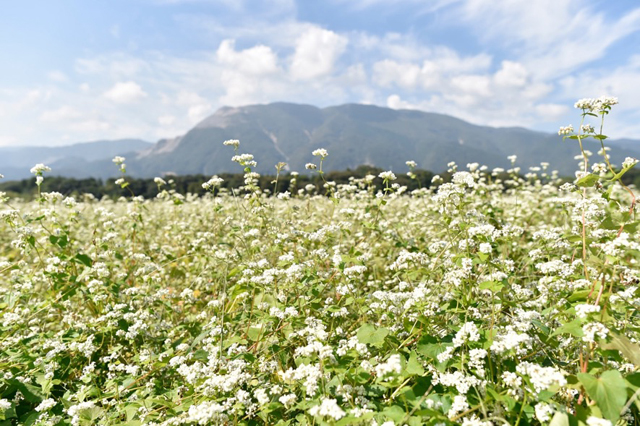
———Stepping off the local train, one is greeted with a gorgeous natural vista
Taking advantage of the popularity of cycling, Inabe is developing “Cycle Tourism”. In recent years, Japan’s premier cycling event, the Tour Of Japan, as well as other cycling events, have been gaining attention, and more and more people can be seen enjoying Inabe’s natural beauty by bicycle. The Sangi Railway, which connects Inabe with nearby Yokkaichi, was originally built to transport coal mined at Mount Fujiwara, but now local folks use it in daily life, and many cyclists take advantage of it as well.
This time, using a cycle pass to take our bicycles on the train, we set out to enjoy Inabe’s natural beauty and try some local soba.
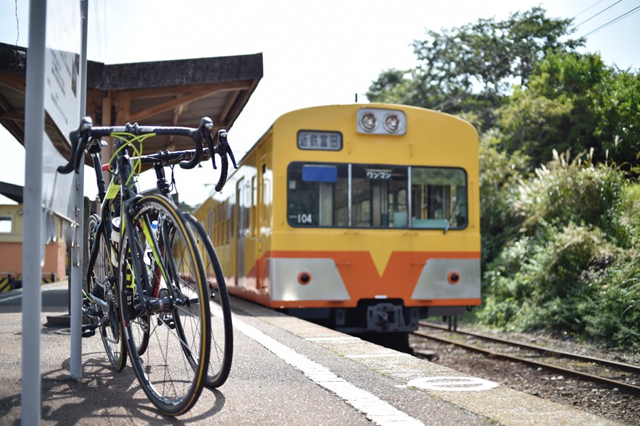
Boarding the Sangi Line at Ooyachi Station, we take in the serene village and country scenery until arriving at the end of the line, West Fujiwara Station.
When we step off the train, there, as if to greet us, stands Mount Fujiwara. At more than one thousand meters tall, the mountain looms over us.
“Where is a good soba shop? It’s best to ask a local!”
The station attendant recommends his favorite soba shop, so we plan our route around it and set off. The shop has only been in business for about two years, but not only is it popular with locals, people from other prefectures often visit as well.
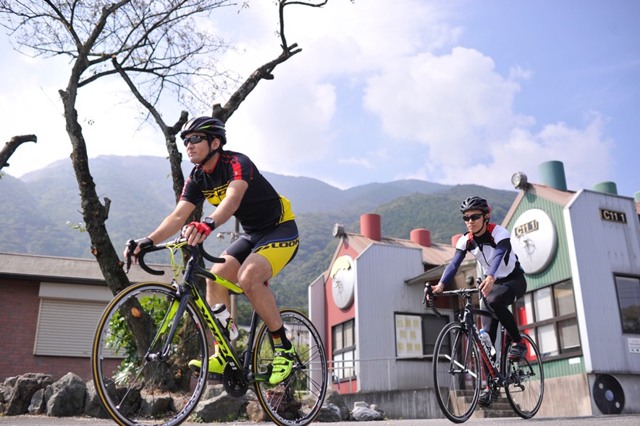
Putting Mount Fujiwara behind us, a ten minute ride brings fields of soba into view.
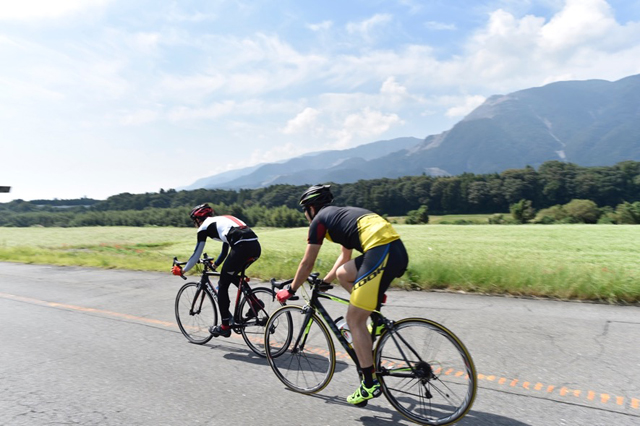
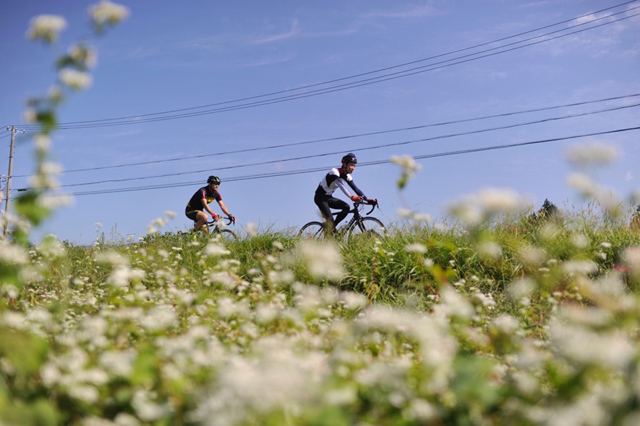
From late September into October, the soba fields are a riot of small white blossoms, making lovely contrast with the blue of the sky and the green of the mountains. Leaving the soba fields behind us, we make for the soba shop. This experience can only be had at this time of year.
———Mie’s Top Soba Location, Inabe’s Soba
Having had our fill of nature, we begin to get hungry. Soon we arrive at the shop the station attendant had recommended to us.
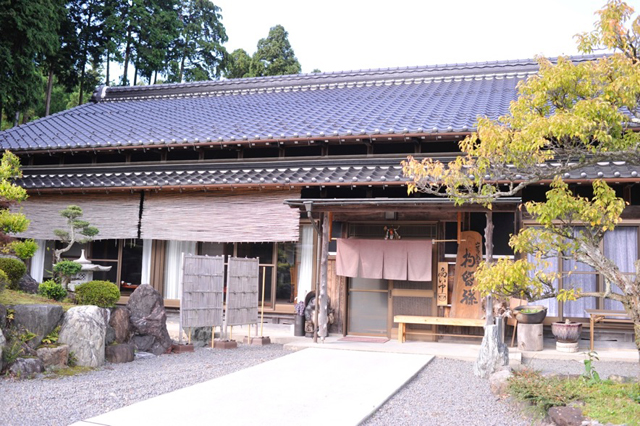
A renovated traditional house, this shop has a distinctly nostalgic air to it.
We wonder what sort of soba they will bring out.
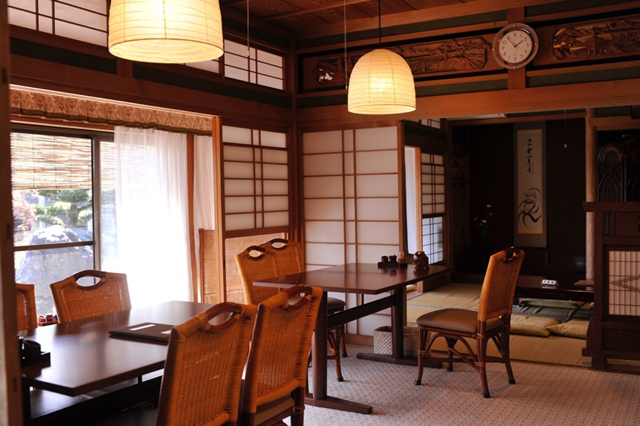
Stepping inside, our first impression is that of coolness. Not the chill of fans or air conditioners, rather, a pleasant cool breeze wafts through the place. I am reminded of going to visit my grandparents’ home in the country when I was a child.
Taking in the nostalgic air, we order the soba lunch set.
“2 to 8 or 10 percent, which would you like?”
“If you want smooth soba, 2:8. If you want stronger flavor, 10 percent” we are informed.
Wanting to enjoy the flavor, I choose 10 percent.
Printed on the menu is the proper method for “How To Eat Soba Noodles”.
1)First, without dipping in the soup, try some plain soba noodles. Enjoy the fragrance, the sweetness, and the texture of the soba.
2)Next, taste the soup. Confirm its level of sweetness.
3)Next dip some soba noodles in the soup. Place only about a third of the noodle in the soup, then eat.
4)Don’t put seasonings in the soup. Put a little on some noodles and eat them. Then you may add seasonings, but be sure to save a little.
5)Finally, add some soba broth to the soup and drink it. Add your remaining seasonings and enjoy!
Not being particularly well informed about soba, I am glad for this lecture on soba-eating technique. If they are this particular about how to eat soba, the owner must be very particular about how he cuts his noodles. I picture a stubborn old soba chef, the kind often seen on TV, bringing us our noodles.
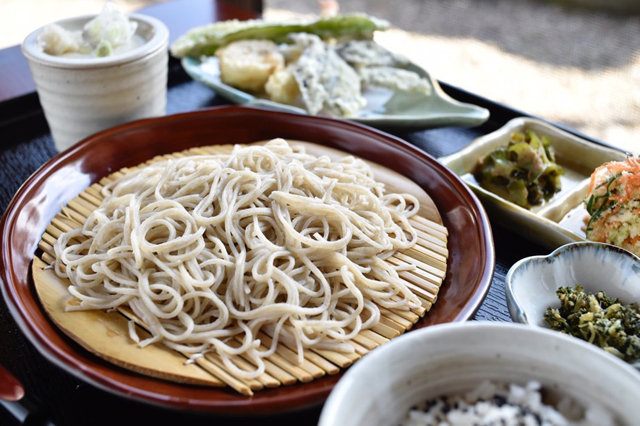
Following the rules laid out in “How to eat soba noodles”, I try a plain noodle first. The aroma of fresh soba fills my mouth. Next, I taste the soup. I enjoy how the soup’s flavor changes when mixed with soba broth at the end of the meal. I recall the scenery of the soba fields we passed through on our way here…
Even though I don’t know that much about soba, I was able to experience its subtle flavors thanks to the skill of the soba chef.
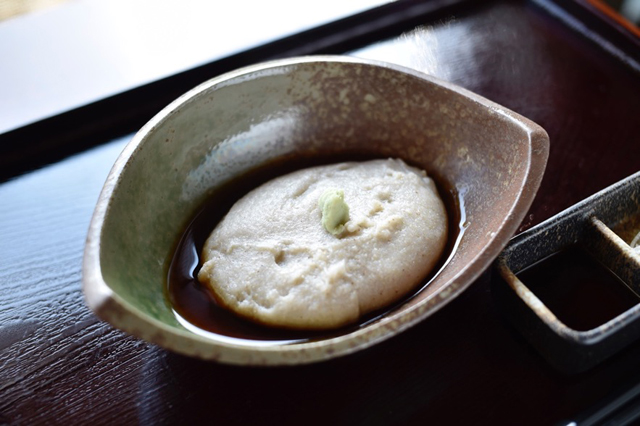
———We Actually Hadn’t Planned to Have a Soba Shop
Just who runs this shop, and why does he make this soba? I asked to speak with the owner.
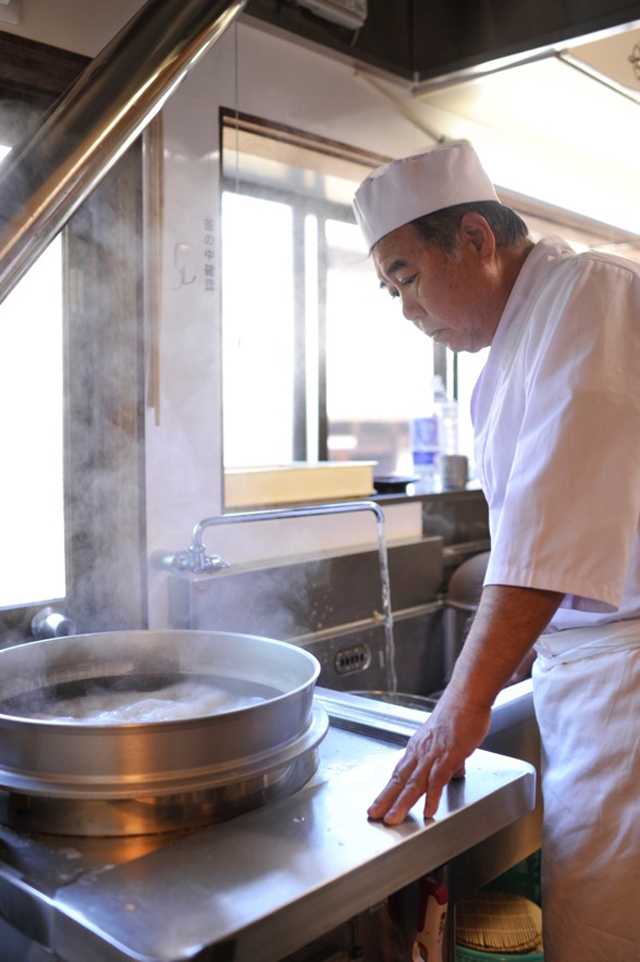
“At first, I didn’t really want to do a soba shop” Mr. Matsushita says, surprisingly.
“I couldn’t let the mountains and gardens that my parents had taken care of go to waste. We started a farmhouse restaurant to feature the delicious local vegetables and delicacies from the mountains so we could continue to take care of our mountains and gardens. The wife’s skill in the kitchen satisfied our customers. Soba was just one of the dishes we offered in our set meals, but for some reason, it became our focus, and now we are a soba restaurant.”
“We can’t let our ancestral land go to waste. We want people to enjoy not just our soba, but also our delicious local vegetables as well.”
Mr. Matsushita is a founding member of the Inabe area “Soba Enthusiast Society Miyabi”, which was formed at the time soba cultivation began here in 2002. In order to deepen the roots of soba culture in Inabe, for over ten years Mr. Matsushita has participated in soba study groups and symposiums nationwide and has promoted Inabe’s soba, in addition to cutting his own soba noodles. He now is a third degree master of soba noodle cutting, and word of his soba has spread far and wide.
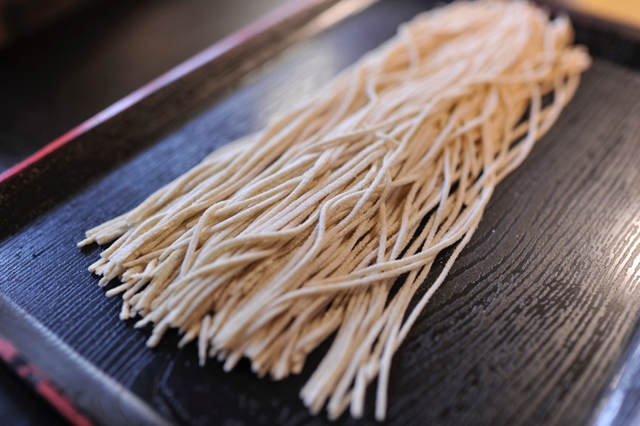
Mr. Matsushita looks pleased as he tells us how folks from neighboring Aichi, Gifu, and Shiga prefectures make the trip to his restaurant.
His wife Kiyoko is in charge of side dishes and tempura. She uses home grown vegetables and hand picked wild plants as much as possible.
Tempura is served with a special house blend of Himalayan rock salt and Japanese green peppercorn. The sweetness in the salt gives way to the refreshing spice of the peppercorn, accentuating the flavor of the tempura.
The Matsushitas’ careful selection of fresh local products and desire to serve only the finest dishes to their customers has resulted in a soba restaurant that will delight many a connoisseur.
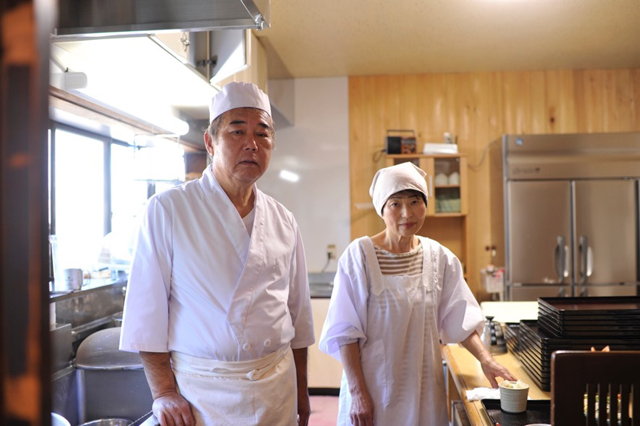
———Coexisting With Nature and the Circle of Life
The Matsushitas have made using home-grown vegetables as much as possible their motto. Mr. Matsushita shows us around his garden.
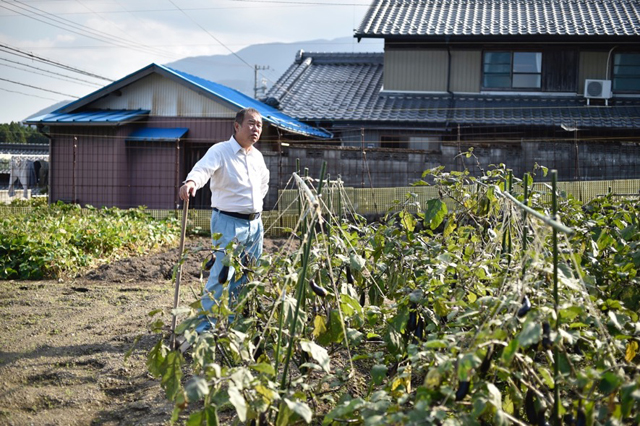
To grow good vegetables requires good soil. After retiring from the local government, and with the help and advice of his father and many local farmers, Mr. Matsushita, a complete novice, eventually made a successful garden. Starting with eggplant and pumpkin, he now raises more kinds of vegetables than he can keep track of.
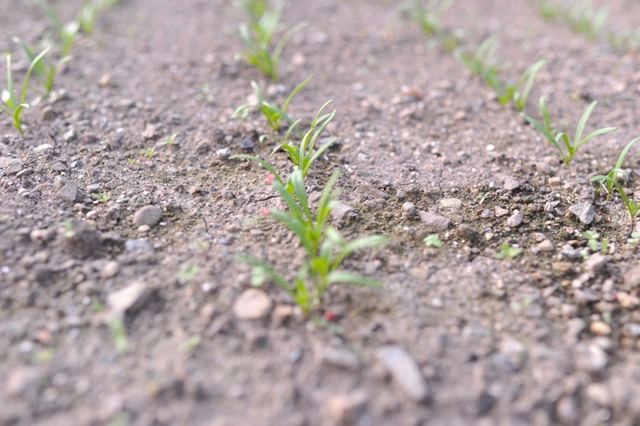
“Even if you have good soil, you have to tend your plants carefully. You have to mix in the proper fertilizers and prepare the soil or you won’t get good vegetables” says Mr. Matsushita.
Next, he takes us to the mountainside.
On the mountainside, he raises shiitake mushrooms, green peppercorn, and ginger, among other things.
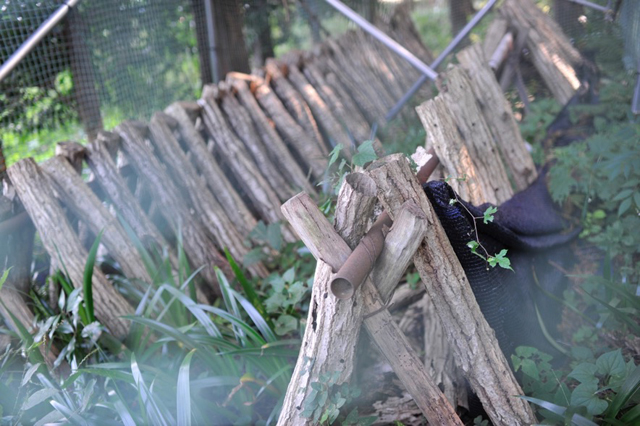
It is here that Mr. Matsushita shows us something interesting.
“This is what I’m working on now. I want to make fertilizer for my garden out of soba husks. Return the local soba husks to the earth, and in turn use that earth to raise vegetables we can eat.”
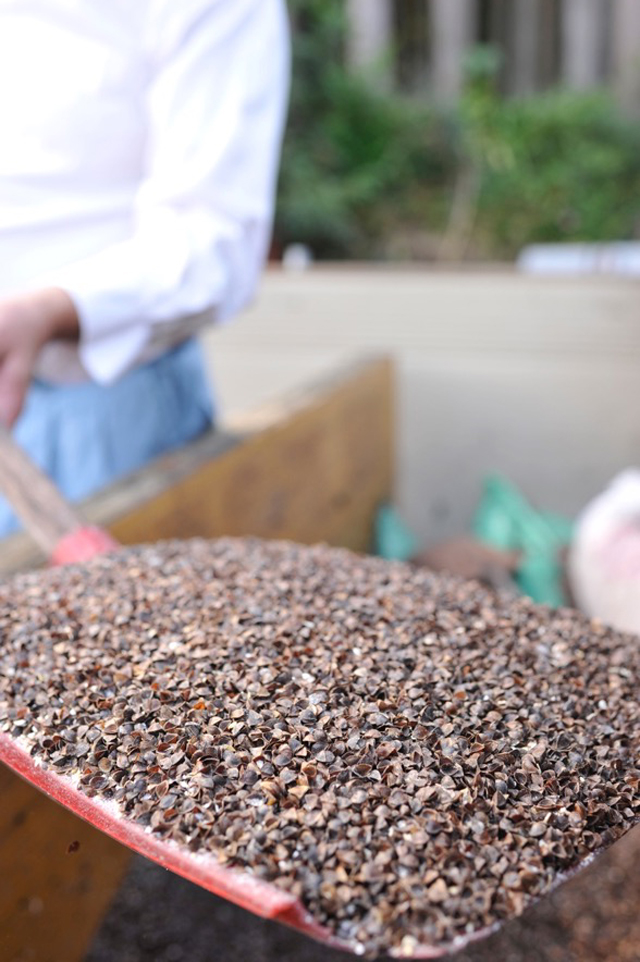
It’s a true natural cycle.
“This land was passed down to me from my ancestors. It is the basis for our food and our family. It is all connected. I feel it is very important to protect and make good use of this land and these resources.”
The blessings of the land become clear in Mr. Matsushita’s words. We too feel a desire to give something back to the land which has given us so much.
The feeling of the local people is present in every dish of soba.
Partaking of this soba in the midst of this natural beauty, one can see that the bonds between the people here and nature will grow ever stronger.
———Sweets Refresh Tired Bodies
There’s nothing better for a body tired from cycling than sweets.
In Inabe, there is another famous local product, Japanese green tea.
“If I can tell even one more person about Inabe tea…” This is the philosophy of the Inabe Tea Producers Association, the Inabe City Tourism Council, and the Inabe City Merchants Association. Cafes and shops in town and all around the region sell pudding made with locally grown Inabe tea. It is known as “Inabe Chappurin”.
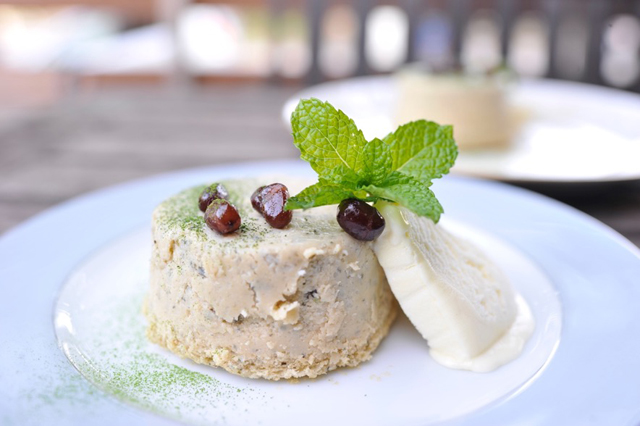
On our way back from the soba shop, we stopping by a bakery. Their “Chappurin” starts as a basic bread pudding. Green tea is blended with the flour to make a delicious pudding that really sticks to your ribs.
Enjoying tea time in this shop nestled in a beautiful natural setting refreshes our tired bodies.
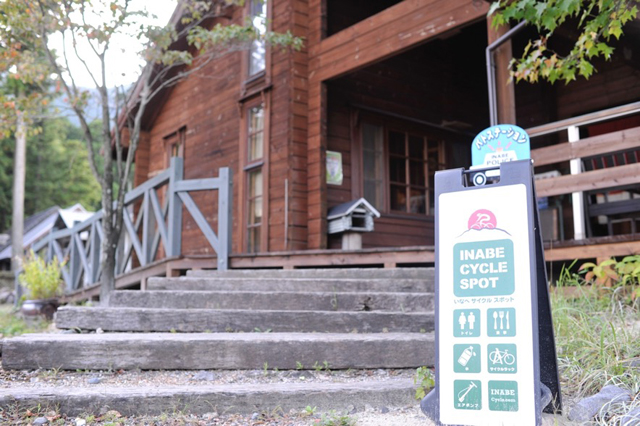
How about taking a cycling trip to Inabe to enjoy its local delicacies and rich natural beauty?
September 25, 2017
Web Magazine Otonamie
Reporter : Nariaki Sato (Otonamie Advisor)
With the Cooperation of
Yamazato No Sobaya Kuruson
Mie Prefecture, Inabe City
Fujiwara Cho Tsukitachi 771-2
Tel 0594-46-3181
Closed on Wed, Thurs, Fri
The Sangi Railroad Corporation
Mie Prefecture, Yokkaichi City
Tomida 3 Chome 22-83
Tel 059-364-2141
HP http://www.sangirail.co.jp/
Cafe Attente
Mie Prefecture, Inabe City
Fujiwara Cho Yamaguchi 1950-1
Tel 0594-46-4800